The great walls of Charlotte
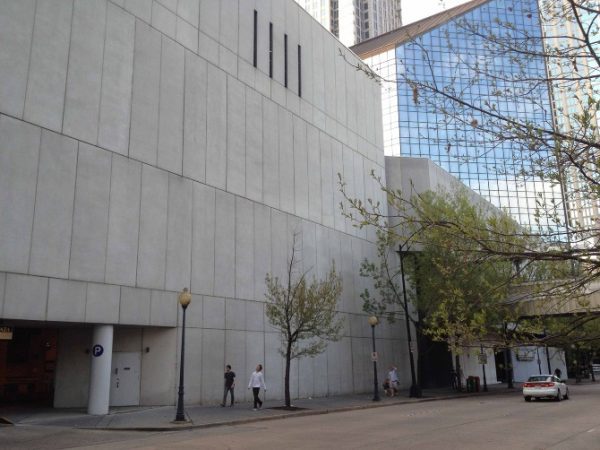
As a resident of Third Ward uptown, urban design student and enthusiastic cyclist, I frequent the streets of uptown. Most of my trips through its streets are not in my car, which means I travel at a slower pace and am better able to absorb the cityscape experience.
On one of these trips through the city I started to pay closer attention to what the walls were made of and how they contributed, or not, to a positive city experience.
|
What blank walls need help, and how? Is there another wall somewhere in town that you think needs some help? Do you have an idea for how to help? Post comments below. If you have photos, email them to us. |
I began to focus in on street elements, like sidewalk widths, tree placement, bench locations, colonnades, textures of surfaces closest to a passer-by and the transparency of the walls we walk by. It is these basic elements that really shape our street experience.
Combine all that with shops to go into, food to taste and entertainment, and the streets quickly come alive. But when the only opening in a block-long wall is a driveway for autos, the story changes. Along that block there’s nothing to do, little to see, nowhere to sit, nothing to eat. Those places are lost opportunities. This project, with photos, illustrations and words, is an investigation into that sort of block, to see how opportunities might be captured.
100 block of South College Street, across from EpiCentre:
I took a Sunday walk a few weeks ago with a friend, to create our own adventure. My goal was to look more closely at the city and get different perspectives from passers-by. I talked to random people walking down the street. “What do you think of this wall?” I said, gesturing to the monolithic grayness that towered above them. “Oh, I hadn’t noticed it, until you said something,” they replied. I wonder: why don’t we notice?
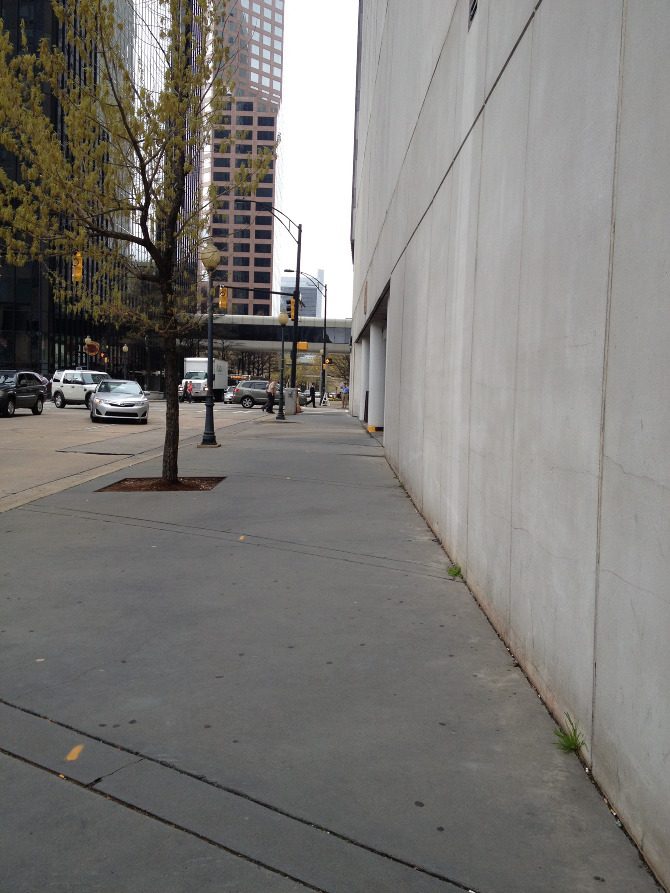
Why is this a faulty urban space?
1) There is nothing for people to do or see along this block.
2) There are no variations in texture, color, form or surface.
3) There is nowhere to sit, nothing to look at.
4) The scale is huge, with the flat bleakness continuing all the way up to the top of the fifth floor.
What might be changed?
In a dense uptown setting, these spaces are valuable to the cityscape, both economically and culturally. We are missing opportunities to capture the character of the city and the stories of its people.
At its core, this project is an idea-generator, a way to reach out to artists and designers to see if somehow, someone can rethink a space to make it more engaging to passers-by and to activate these underutilized places sprinkled throughout the streets of uptown. The goal is to think differently, to spark people’s imaginations and actions and make the core of Charlotte a more interesting, lively place.
How might we use blank walls as a canvas, to create an impact?
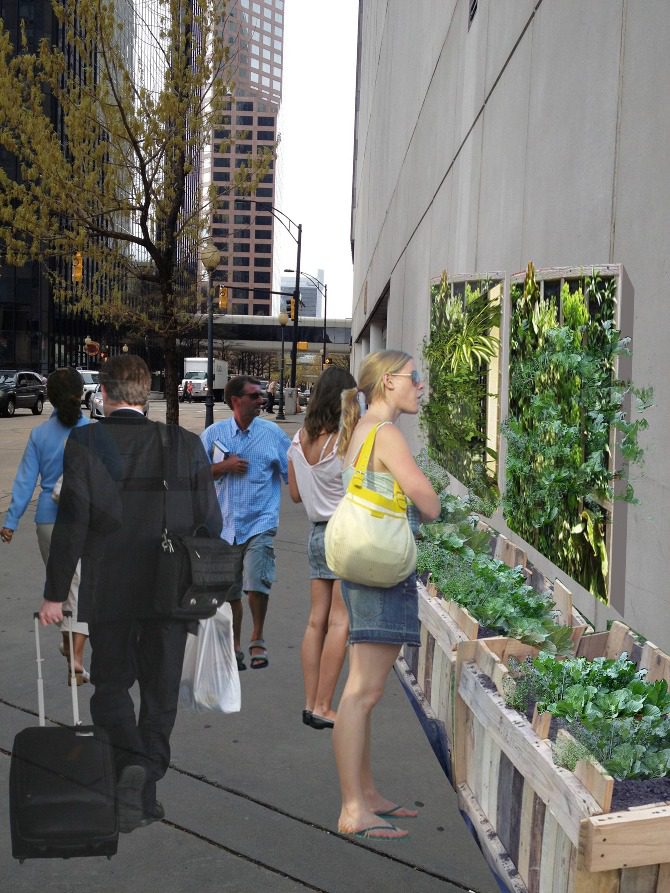
What if the blank wall across College Street from the EpiCentre became a gathering place?
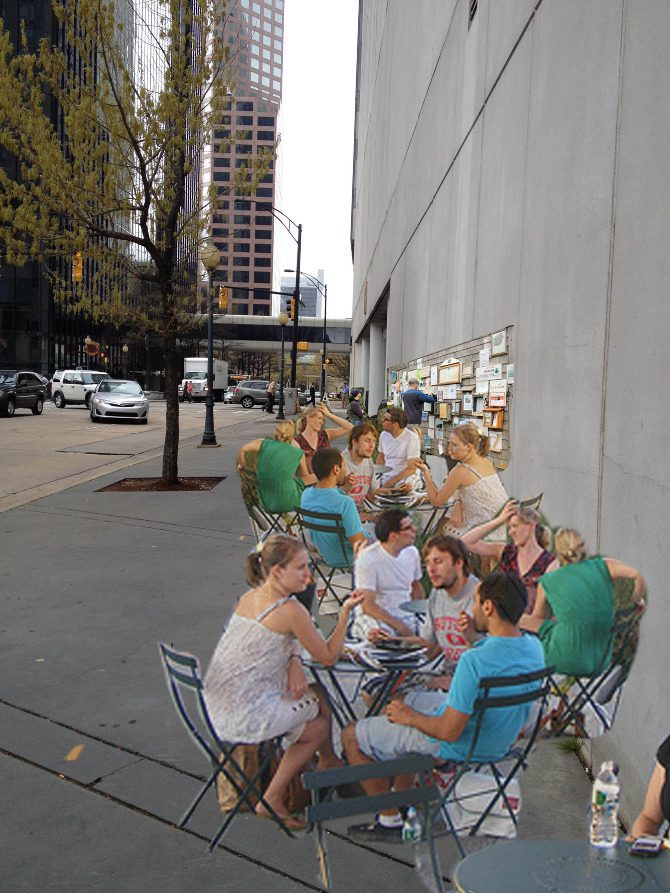
Or maybe an open library, free to all? 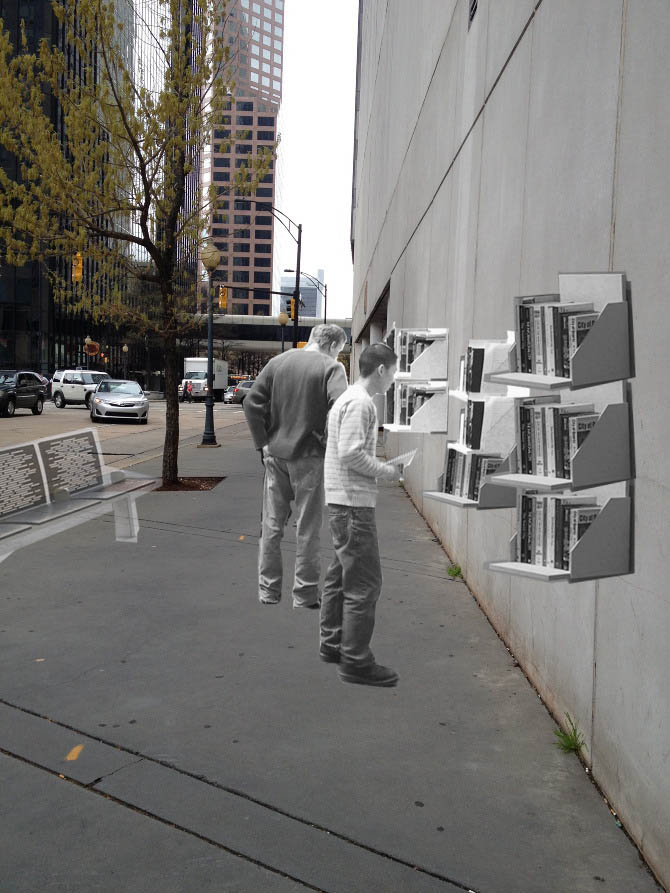 You could try green-on-gray elsewhere, such as this blank wall at 401 S. College St.
You could try green-on-gray elsewhere, such as this blank wall at 401 S. College St.
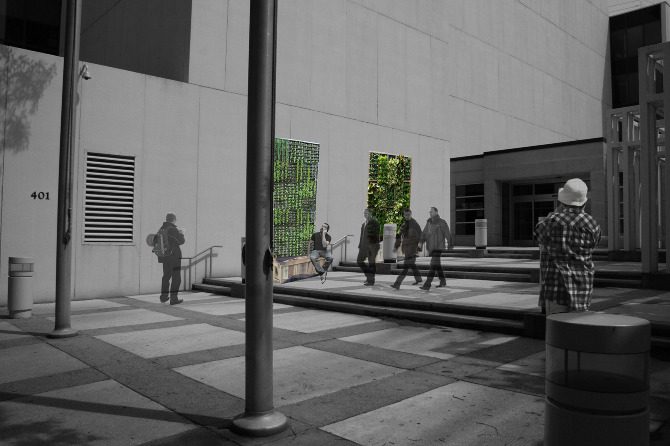
The role of engaging people, building memories
Looking at street artists, “tactical urbanism” acts and “guerrilla art,” and seeing that none of these actions exist in uptown Charlotte, I was inspired. What are some possibilities?
What about something that can start conversations between strangers? Because vandalism can be defined broadly, instead of “guerrilla art,” how about staging a “spoken word” event with people lining up, asking the same thing repeatedly? What kind of reaction would it get? Would it create memories for passers-by? Would there be engagement?
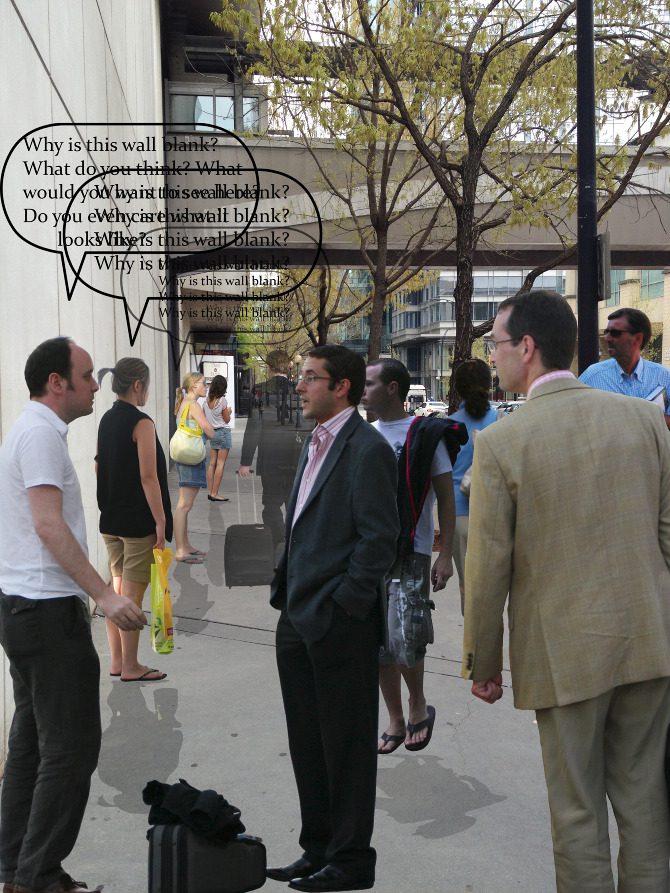
In New Orleans, in an interactive public art project called Before I Die, Candy Chang turned the side of an abandoned house in her neighborhood into a giant chalkboard where residents could write and share what was important to them.
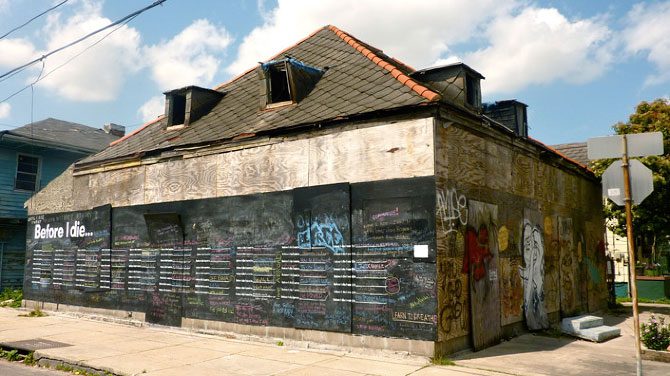
Could this work on one of the blank walls in Charlotte?
It’s about starting a conversation
I have other ideas as well:
1) Project movies onto blank walls, taking advantage of the vast blankness to create temporary liveliness.
2) Paint the street light shadows from the trees onto the walls they fall on.
But do all spaces need to be filled with something? Some might contend there are too many things calling for our attention, too many distractions. Maybe. I would argue that you can make a surface speak in a subtle, elegant way that improves upon the current drab experience. We need our surroundings to improve our daily experiences.
In the end, it’s about starting a conversation, starting the flow of ideas and changing the built environment into a more meaningful place. When do we begin?
Do you have an idea for a blank wall? Is there another wall somewhere in town that you think needs some help? Post your comments below. If you have photos, email them to us.
Views expressed in this commentary are those of the author and do not necessarily represent the views of the UNC Charlotte Urban Institute, its staff or the University of North Carolina at Charlotte.